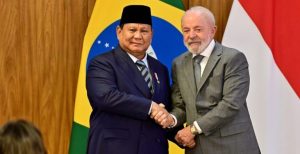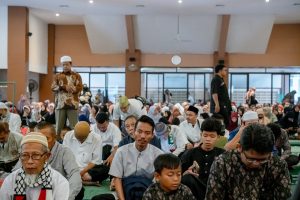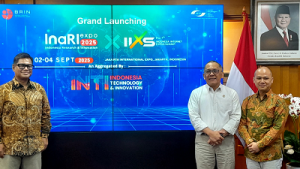
Harvesting tea at Cisarua, West Java.
Jakarta, 12 Rajab 1437/19 April 2016 (MINA) – Indonesian government was urged to address widening income disparity in the country that can be seen from the increasing Gini coefficient which was far from the target initially set in the state budget.
Among the ways to overcome the problem was improving the earnings for people in middle-lower class by improving the manufacture sector. Improvement in manufacture industry should be applied in both small and large-scale manufactures, an Indonesian senior official said.
“Government can encourage the sector that processes raw materials that are abundantly provided in the country. For an example in farming products production. If the raw materials are processed here, the added value would increase,” Indonesia’s Central Statistic Bureau (BPS) Chief Suryamin said here on Monday.
He added that the opening of more jobs for people in the manufacturing sector would increase people’s earnings, compared to when they worked as peasants in lands which were not their own.
Also Read: Last Batch of Indonesian Hajj Pilgrims Depart from Madinah
According to the data released by BPS, the nation’s Gini coefficient stood at 0.40 in September last year, 0.01 points lower than 0.41 recorded in March last year.
Indonesian government has set a target of 0.39 for Gini coefficient that was stipulated in state budget this year, Mi’raj Islamic News Agency (MINA) reported, quoting news.xinhuanet.
The Gini coefficient explains income distribution figure among residents which regards zero as the perfect equality.
Suryamin said that the move to boost manufacturing sector would effectively reduce the Gini coefficient.
Also Read: Fourth Day of Weather Modification Operations: BNPB Disburses 16 Tons of Seeding Material
Boosting up the manufacturing sector would also improve the value-added aspect of the nation’s products from previously selling mere raw material commodities, he said, adding that it would eventually improve the country’s Gross Domestic Production (GDP) as well.
Addressing the income disparity was not an easy task for the government, given the fact that domestic economy is closely affected by international economy condition which is yet to recover from sluggishness in the past few years.
“It would make government to face uphill within the next few decades to address this issue,” a fiscal and monetary deputy at Indonesia’s Economy Coordinating Ministry office Bobby Hamzah said later in the day.
He said that several latest economic indicators have showed downturns, among others were the growths in real sector that stood at 4.8 percent from 6.2 percent, investment sector at 4.3 percent from 8.9 percent, not to mention the exports and imports which were sluggish through last year.
Also Read: Dozens of Volunteers Attend Rumah Zakat’s Basic Training in Bogor
“Those conditions affect the economy situations in the country, including expansion of unemployment and people grouped poverty level,” he added.
To solve those problems, he said government must be able to maintain and assure the accomplishment of national middle-range development targets from 2015 to 2019. Among the ways is to focus on infrastructure sector by shifting the fuel subsidy budget for more productive purposes.
Those efforts were coupled with monetary moves by controlling the inflation so as to assure the accomplishment of the nation’s growth target above 5 percent this year.
Should every step be well implemented, he expected that the nation’s per capita income to reach 11,000 U.S. dollars in 2045 from 3,500 U.S. dollars at present thanks to the nation’s demography bonus.
Also Read: Boycott Impact: Starbucks Closes 11 Stores in Indonesia
“In 2045 Indonesia would see a transformation into middle-income class country from lower-income class country. It was because we will see our population dominated by people in their productive ages,” he said. (T/R07/R01)
Mi’raj Islamic News Agency (MINA)
Also Read: Indonesia: Half a Million Social Aid Recipients Suspected of Online Gambling

































 Mina Indonesia
Mina Indonesia Mina Arabic
Mina Arabic